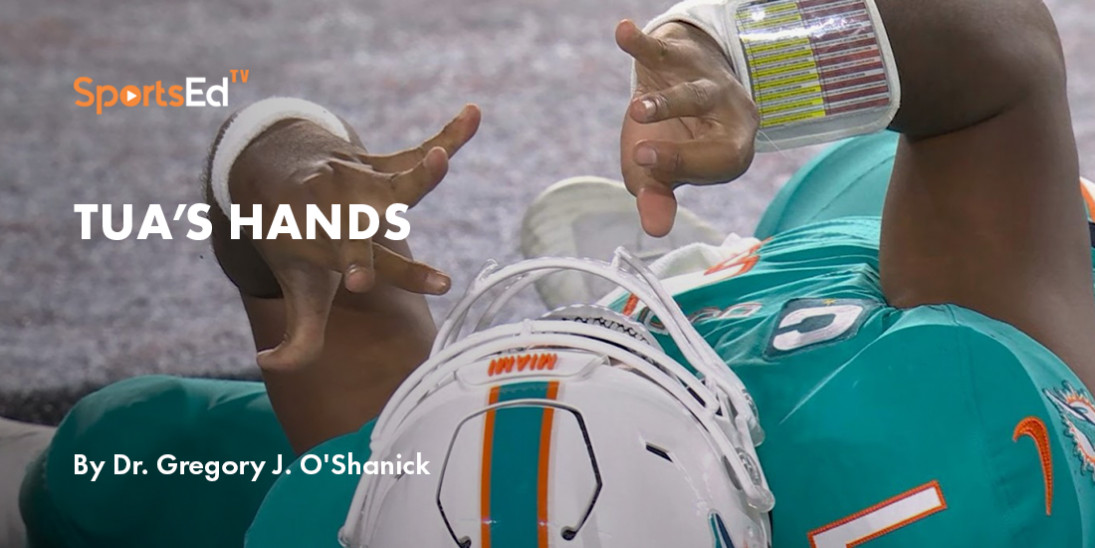Concussion
Welcome and thanks for visiting...

Tua's Hands

Concussion and brain development
Those of us who have had the opportunity to observe newborn infants in the first stages of life have witnessed how slight, unexpected movements can trigger a variety of spontaneous movement patterns. These “primitive reflexes” are a collection of body positioning responses that provide the infant with the ability to perform intentional action, optimal readiness for nursing, and safety, among other things. Our brains, however, must overcome these spontaneous patterns to allow for the normal development of coordination, walking, and sensory integration capabilities as the child grows. This is achieved by the suppression of these reflexes as regions of the brain mature at varying times over the 25 years it takes for the human brain to develop completely.
As the world watched Tua Tagovailoa lying on his back after being tackled on Thursday, many commented that his posturing demonstrated a “fencer’s position,” which confirmed the severity of his concussive injury.
They get partial credit for that answer.
Yes, Tua demonstrated a primitive reflex following the impact.
No, it was not the “fencer’s position.”
But why does it matter?
The “fencer’s position” (technically called the asymmetric tonic neck response) can be elicited in newborns to the age of maybe six months by gently turning their heads to the side. Involuntarily, the arm to the side toward which the head is turned will extend, and the other will flex as if the infant were preparing to thrust a sword. That’s not what Tua was doing with both hands.

His hands demonstrated his fingers on both hands being splayed outward as his arms were in front of his face. This is the position of being decorticated. It indicates that his brainstem was temporarily disconnected from the upper part of his brain, a much more severe event indicating a much more serious level of injury.
In fact, in 1974, when two Scottish neurosurgeons developed the Glasgow Coma Scale (GCS) to categorize brain injury severity by eye movement, verbal response, and motor response, they rated “abnormal extension (decorticate)” as next to the lowest score obtainable (2) out of a possible score of 6.
In calculating Tua’s GCS, which is used internationally in ERs and by ambulance crews to define the severity of brain injury, if we generously (and improbably) gave him the highest possible score on Verbal response (5) and Eye opening (4), his GCS would total 12, which falls in the moderate range of TBI severity, not mild TBI or concussion!
This is a critical factor in looking at Tua’s long-term trajectory and outcome, as the prognosis for moderate TBI is statistically three times worse than that for concussion/mild TBI.
From where I sit, this young man should be sitting out the remainder of the season to recover.








